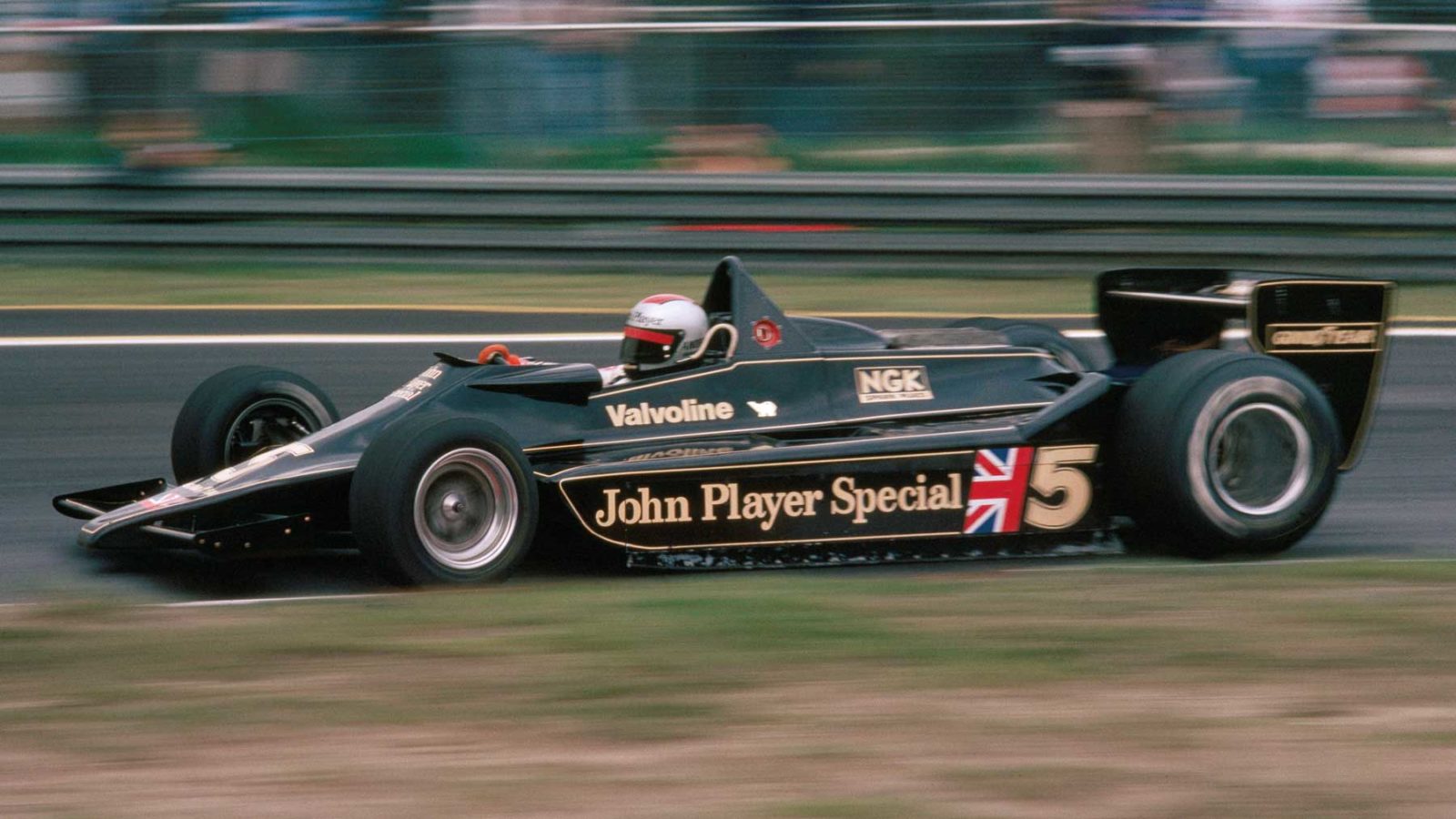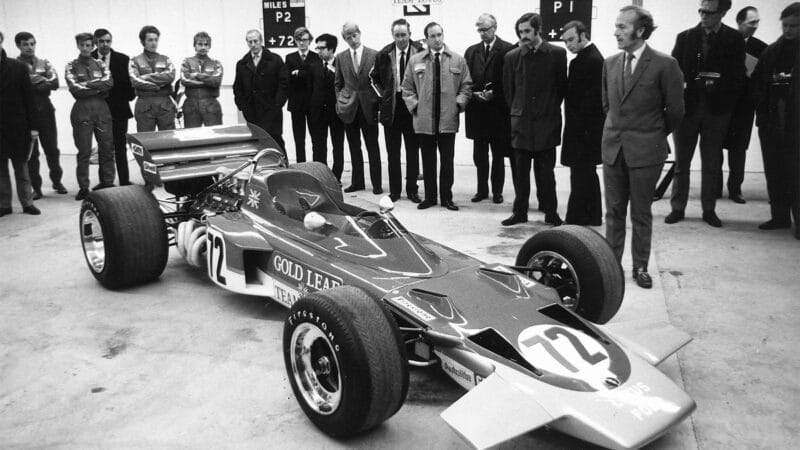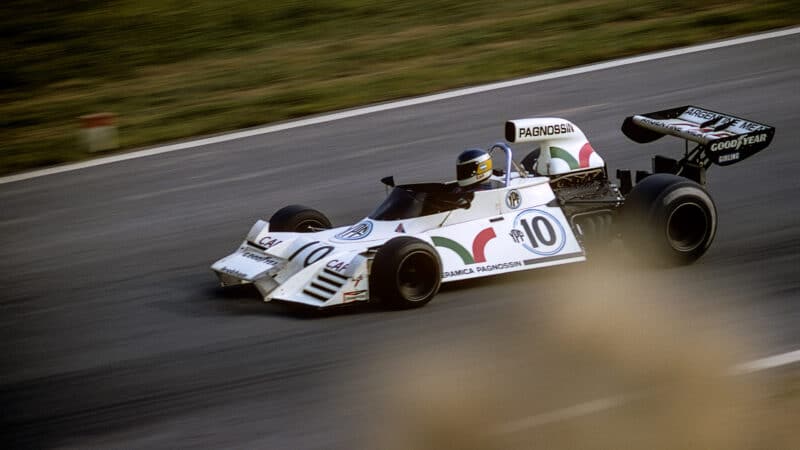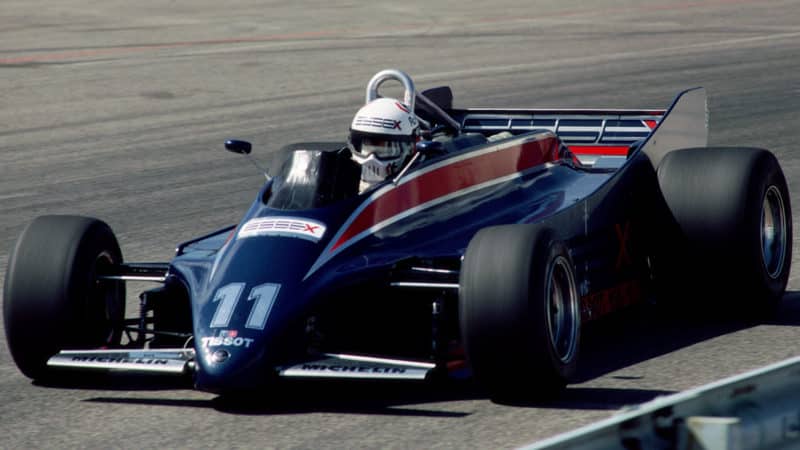Southgate “Keeping up with the technical developments was a one-man show: load the stuff into your car and drive to Silverstone, or the wind tunnel at Imperial College London, to test it. DN1 was wind tunnel-tested. Not all the cars were then; McLarens weren’t.”
John Barnard “My first job at McLaren was to finish the M23’s chassis; Gordon Coppuck was the designer. We didn’t think of the car in conservative terms. For example, I did the first single post-mounted rear wing for it. It was well built and solid. Not a groundbreaker, but successful. Detail is as important as the fundamental concept.”
Southgate “In the late 1960s we had bolted bits of metal — flaps, splitters, etc — to the cars. These worked, but we didn’t know why. So we started going to wind tunnels with models to find out.”
Herd “The tunnels were pretty crude, but the information was good once you’d learned what you could and couldn’t believe. A front wing’s performance had to be assessed at the track.”
Murray “The main idea behind BT42 was to move the separation point nearer the ground to force more air over the top of the car. We got so much effect from it that it made me wonder what would happen if we did even more.”
1974
Ferrari‘s 312B3 shifts the driver forward within the wheelbase; Brabham’s BT44 features an underbody skirt and pullrod suspension.
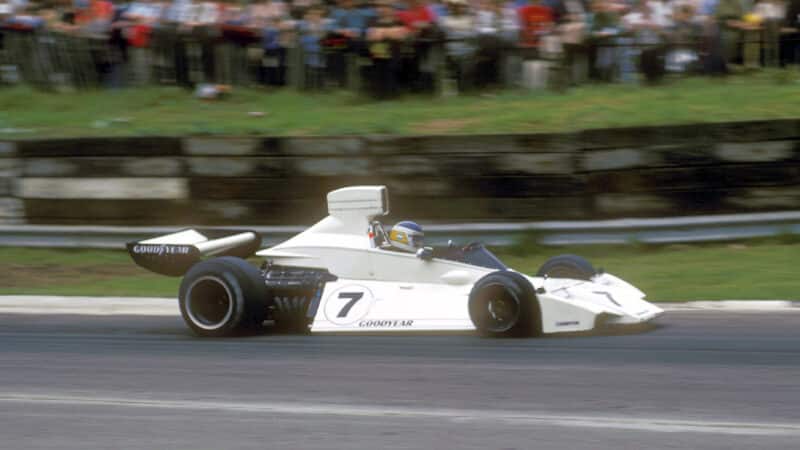
Reutemann and Brabham BT44 at Brands Hatch
Grand Prix Photo
Murray “I designed myself a 750 Formula car. To improve its aerodynamics I put the springs inboard. Everybody was using rockers, but they’re dreadful — undamped leaf springs, basically. So I came up with pullrods, which I simply upscaled for F1. I also got rid of the usual ‘Forth Bridge’ architecture surrounding the gearbox and put the suspension loads directly into the block. Innovation is as much about simplification as complexity. I wasn’t using computers, it was all from experience.”
Southgate “Goodyear had a big black box that bolted to the gearbox. Transponders measured wheel movement and g-forces and the info was recorded on a cassette tape. But this tape was affected by the forces and bumps, too, so when we printed its data there was a lot of interference within its squiggly lines.”
Murray “We had very crude ground effect. In truth, we didn’t quite know what we had. We made a manometer, a water tube with a brass tap, and strapped it to the side of the car. We discovered that if we ran a transverse, vee-shaped, sacrificial skirt, it generated downforce. Originally designed to exclude air from going under the car and producing lift, the skirt created a low pressure behind it. We got 100-1501b of downforce, which meant we could run less rear wing.”
1975
Ferrari’s 312T has a transverse gearbox to help centralise mass within its wheelbase.
Southgate “We had a computer programme that could do geometries. Punch in two or three fixed points, and one or two you could move, and keep playing until you get the geometry curve and roll centre you want. It wasn’t 3D. It just replaced the drawing board.”
Herd “I had done CFD on Concorde. You could do it with supersonic air because you only needed to solve linear equations. Subsonic air’s behaviour is far more complicated.”
1976
Tyrrell unveils its six-wheeled P34. March builds a six-wheeler, too. Brabham introduces carbon brakes on its BT45.
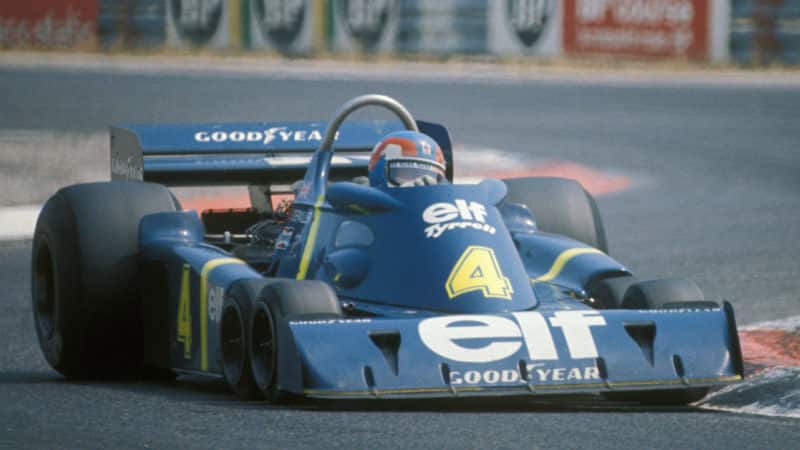
Tyrrell’s P34 divided opinion, but was an F1 race-winner
Grand Prix Photo
Southgate “We’d been looking at the sixwheeler concept, and four at the back was the obvious route: reduced frontal area, better traction, and you could have had different tyre compounds. But the need was cancelled out by tyre developments. I was surprised anybody bothered to build a six-wheeler.”
Herd “Tyrrell’s four wheels at the front seemed a nonsense. Our six-wheeler had them at the back. It had phenomenal traction and went like a shell in a straight line. We needed to reduce its weight, not by a ridiculous amount, but by too much for our budget.”
1977
Renault introduces turbochargers; partner Michelin introduces radial tyres. Lotus’s 78 ‘wing car’ channels underbody air to generate downforce.
Southgate “Tyres started to get technical. Unlike Goodyear, Michelin wanted details of your car to supposedly engineer tyres to suit. They brought fewer types of tyre to a test, too, because they’d already established the route they thought you should follow. Goodyear used to throw loads of tyres at you and you’d go round and round. Don’t forget, we didn’t have data-logging then.”
Peter Wright “It was bloomin’ hard to get good data. The original analogue systems of the late 1960s were OK but limited. I’d read that David Williams at Cranfield had designed a small data system for an aerobatics plane; I asked him to design one for an F1 car. We were getting data in the tunnel but had no idea what was happening on the track. With ground effect coming, we needed to find out what might be wrong, measure, model and come up with a digital solution. By the end of the year we had a data system on the Lotus 78. It took several years before we had one we could rely on.”
1978
Wolf‘s WR5 introduces sliding skirts; it and the Lotus 79 are the first true ground-effect cars. Brabham responds with the BT46B ‘fan car’. Tyrrell’s 008 features onboard data-logging.
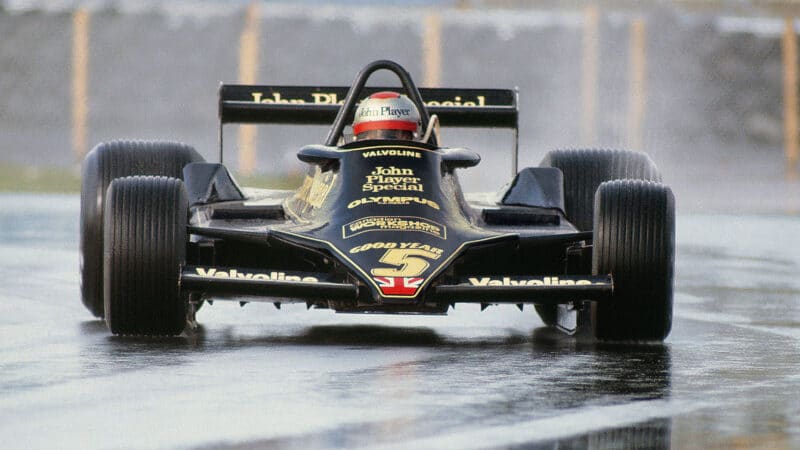
Andretti and Lotus bring ground effect aero to the fore
Grand Prix Photo
Murray “You’d have this great idea that was a huge amount of work to get on the prototype. That would usually be just a few weeks before the first race, so if it didn’t work, you dumped it. With surface radiators, we had a boundary-layer build-up at the front and couldn’t get the water temperature down. We tried all sorts of aerofoils to reintroduce the air but ran out of time.”
Wright “The ooh-my-goodness moment was discovering when skirts worked how big the effect was. We couldn’t believe it. The next was discovering what Wolf’s Harvey Postlethwaite had done to skirts: a board in a box.”
